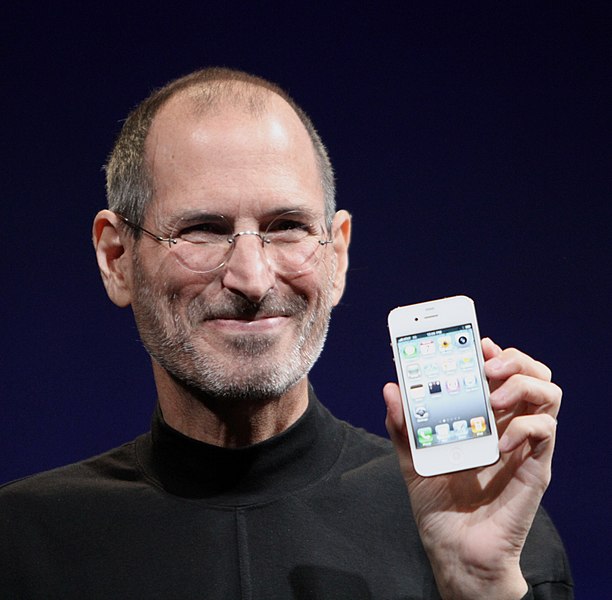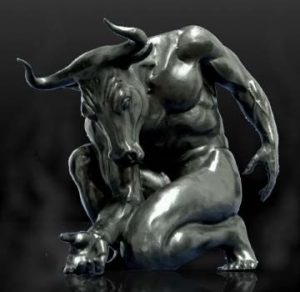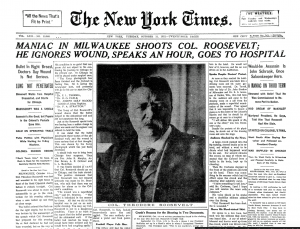“Today, we’re introducing three revolutionary products of this class. The first one is a wide screen iPod with touch control, the second is a revolutionary mobile phone and the third is a break-through internet communications device. So, three things a wide screen iPod with touch controls, a revolutionary mobile phone, and a breakthrough internet communications device. An iPod, a phone, and an internet communicator. An iPod a phone. Are you getting it? These are not 3 separate devices; this is one device and we are calling it iPhone.”1
Steve Jobs used this opening at the 2007 unveiling of the brand-new iPhone. The iPhone revolutionized the mobile phone industry. This is just one of the many achievements Steve Jobs accomplished during his lifetime working with Apple, but how did Steve Jobs go from a college dropout to the co-founder of Apple?

Jobs didn’t have a good relationship with most of the employees at Atari. They complained about his attitude and his hygiene. After being confronted by his boss, Jobs demanded that he be allowed to work on his own projects by himself. After some convincing, his boss, Al Alcorn gave him his own project to create a game with a tight deadline for a couple thousand dollars, as well as having him work at night when no one else was in the office. Working on the project for a day, Jobs realized he didn’t have the skill to work on the technical side, but his friend Steve Wozniak did. Jobs requested help from Wozniak to complete the game. Upon completion, Jobs showed the game to his boss. Visiting Wozniak afterwards, Jobs gave him $350 for his help with the game, telling Wozniak that he was only paid $700 instead of the actual couple thousand dollars he made.2
Hanging out with Wozniak, Jobs learns about Wozniak’s vision of a personal computer that would have a screen and a typewriter-like input device. This idea differed greatly from the standard personal computer at the time, which was a board with switches and lights that you would use as input and output devices. Upon hearing this idea, Jobs envisioned this device as a revolutionary piece of technology. Jobs, wanting to bring this device to life, helped Wozniak put together the device by providing parts. Jobs was able to convince engineers at Intel to donate DRAM chips or memory chips. With this type of help from Jobs, Wozniak was able to bring his vision to life. This device would become the basis of the Apple I computer.3

Once the computer was completed, Wozniak presented it to his friends at the Homebrew Club, a place where technicians could talk to each other about technology they created or knew about. At this presentation, Wozniak gave out plans on how to create one, but few succeed in recreating the computer. Upon learning about the failure of others, Jobs proposed to Wozniak that they start a business selling the circuit boards to people. People would buy the main circuit boards from them and put it together with other parts to create a computer. Although Wozniak doubted that they could find enough people to buy the circuit boards, he reluctantly agreed to work with Jobs. Once they decided that they would sell circuit boards, they needed a name for their new company. Jobs wanted a name that didn’t sound technical, but that would attract regular people and not just technicians. Steve Jobs had recently visited the All One Farm, which was a commune in Oregon owned by Jobs’ friend Robert Friedland. Jobs had taken care of the apple orchard located here, and that suggested to him the name Apple Computers.4
Needing money to fund the creation of their computers, Jobs had to sell his van and Wozniak sold his calculator making a total of $1250. A man named Paul Terrel, who attended Wozniak’s presentation at the Homebrew Club, became interested in the computer Wozniak made. Approaching Jobs after the presentation, he told him to stay in touch, and Paul Terrel then received a visit from Jobs at his store. During this visit, Jobs convinced Terrel to order fifty of their computers for $25,000. After deciding that making 50 boards would take too much time by themselves, they decided to mass-produce the boards with a manufacturing company. However, due to the engineers at the manufacturing company being unable to follow Wozniak’s design, Jobs hired an engineer from Atari, Ron Wayne, to draw new schematics that were easier to follow, based on Wozniak’s design. Still in the early stages of their company, Jobs and Wozniak needed parts to put the computers together. In order to get parts, Jobs persuaded a local electronics supply companies to give him parts on credit. After working hard, the circuit boards were completed. Upon delivering the boards to Terrel’s store, Jobs was paid $500 per unit, making a total of $25,000.5 After immediately getting paid, Jobs went to the local electronics supply store and paid off the parts he had received from them on credit.6

Unable to afford an actual office to work out of, Jobs and Wozniak used Jobs’ garage as their main headquarters, which was a fact they tried to keep secret when making deals. In order to look professional, Jobs opened a post office box and created an answering service. In order to increase the production speed of their Apple I computer, Jobs hired their friend Bill Fernandez to help them out. By hiring Jobs’ sister, Patty, and his other friend Dan Kottke, they designed an assembly style way of building their computer. Bill, Dan, and Patty all worked on attaching parts to the circuit boards Jobs brought back from the mass production company. Once they completed a board, Wozniak tested it by connecting it to a monitor and a keyboard. After testing a board, Wozniak corrected any mistakes made. By insistence of Jobs, they used only the best parts to create their computer, even if they were more expensive and not commonly used. Along with picking up boards from the production company, Jobs also went around visiting electronic stores trying to sell the Apple I. Since Jobs was so persuasive and stubborn, most stores would stock at least one of their products, which were sold for $666.66.7
Along with working to produce more Apple I computers, Wozniak regularly thought about how to improve the Apple I. Wozniak imagined that the next computer they made would support color, sound, and high-resolution graphics. Along with these details, he wanted to add a way to increase the memory of the computer. As well as adding these features, Jobs wanted to add newly created technologies to the computer, envisioning a world where everyone had a computer. To achieve this vision, Jobs was convinced that they needed a computer that came fully assembled and was easy to use. He believed that if Apple could make this, then they would change the whole world. These ideas led to the concept of the Apple II. Jobs and Wozniak continued to sell their computer by displaying the Apple I at the Personal Computer Festival in Atlantic City, New Jersey. As well as displaying the Apple I, they presented a mock build of the Apple II computer. Although the Apple II mock build wasn’t very interesting, Jobs took from the experience the idea that if they wanted to make a computer everyone could use, they would have to completely change their design. To do so, he decided they would have to sell a computer that came with a monitor, case, and keyboard. Not only focusing on the physical design, Jobs said the new computer would have to be quiet, lightweight, and attractive to the common people. To make this idea a reality, Jobs hired the industrial designer Jerry Manock to redesign the Apple II to fit his ideas. He also convinced Wozniak that they needed a lightweight power supply that wouldn’t need cooling to eliminate noise. Needing money to fund the development of the Apple II, Jobs went to banks, Atari, and Hewlett Packard to find investors. Ultimately he was denied funding due to his youth, long hair, and hippie attire. After continuously trying to find an investor, an individualist named Mike Markkula, who could look past Jobs’ appearance, came into play. Upon hearing about Jobs’ ideas and vision for the computer and world, Mike Markkula was convinced to fund them, providing $92,000 for a third of the company.8
Jobs wanted to display the Apple II at the 1977 West Coast Computer Faire. In order to meet this deadline, Jobs hired more employees to assist. The Apple II upon completion was the first easy-to-use computer to be made. The computer supported color, sound, high-resolution graphics, and attachable game paddles. Along with being the first easy-to-use computer, it was also the first computer to come with a built-in programming language. This became a standard for computers for years to come. The display at the fair was a huge success that came from Jobs’ innovation of display and marketing. Quickly, Apple Computers had received 300 orders for the new Apple II.9

Apple Computers quickly turned a profit from there, making a profit of two million dollars by 1978 to making $335 million by 1980, Apple Computers was a success. Even more money came their way when the company went public, allowing the public to buy shares. Apple shares started at $22. Jobs’ net worth was more than $217 million, making Jobs the youngest person in history to be on the Fortune 400 list of tycoons.10
A world-changing visionary, and global leading entrepreneur, Steve Jobs completely revolutionized the idea of the personal computer and electronics. Starting with the Apple I computer and continuing with the Apple II, he tore down the ideas of what a personal computer was and showcased the idea of a personal computer that the everyday man could use. Not stopping with the personal computer, he continued to change the mobile phone and the portable music player industries. Continuing to improve his work until his untimely death, he completely changed the use of technology in everyday life. With all his work and achievements, Steve Jobs has become a household name across the country maybe even the world.
- “Steve Jobs unveils the iPhone,” Video file, 5:01, YouTube, posted by CNET, January 9, 2017 https://www.youtube.com/watch?v=LOb3FJhDbYs. ↵
- Barbara Sheen, Steve Jobs (Detroit, Mich. : Lucent Books, 2010), 33-36. ↵
- Barbara Sheen, Steve Jobs (Detroit, Mich. : Lucent Books, 2010), 38-39. ↵
- Barbara Sheen, Steve Jobs (Detroit, Mich. : Lucent Books, 2010), 40-42. ↵
- Michael B. Becraft, Steve Jobs: A Biography (Santa Barbara, California: Greenwood, 2017), 35. ↵
- Barbara Sheen, Steve Jobs (Detroit, Mich. : Lucent Books, 2010), 43-44. ↵
- Barbara Sheen, Steve Jobs (Detroit, Mich. : Lucent Books, 2010), 44-45. ↵
- Barbara Sheen, Steve Jobs (Detroit, Mich. : Lucent Books, 2010), 46-49. ↵
- Barbara Sheen, Steve Jobs (Detroit, Mich. : Lucent Books, 2010), 49-50. ↵
- Barbara Sheen, Steve Jobs (Detroit, Mich. : Lucent Books, 2010), 50. ↵



34 comments
Kacey Diaz
I thought this was a good article. Not going to lie though based off the introduction I was expecting this article to be about the IPhone not so much the Mac computer but none the less this was a great article to read. What I really liked about this article was reading about Jobs’ start up with technology and reading about his ideas and how he was able to get the funding and investments for them.
Francisco Cruzado
It is interesting to have the reminder of how many visionaries look at the future and despite its bleakness, fight for a better prospect, for a dream they have. I liked the way Jobs was conveyed in this article, because I feel his passion and his effort and the great challenges he had to overcome. I believe ideas can shine by themselves, but sometimes the market needs from verbiage, from a golden package, from a cover that drives crazy the consumer. Jobs was a master of marketing, a master of publicity, and it is hard to imagine an Apple that could be successful without his tireless attempts to gain funding or even some recognition. I guess there lies the difference between genius and billionaries, or, to be more specific, between winning a Nobel prize and being named in the Forbes list
Ana Cravioto Herrero
It is incredible all that Steve Jobs accomplished during his lifetime and the effect that his ideas and creations had on our generation and for generations to come. It was interesting to learn about the people who helped him be successful, especially because they are almost never mentioned when the success of Steve Jobs is mentioned. In addition of learning about his working partners, it was very interesting to learn about many of the obstacles he went through.
Shriji Lalji
One of the underlying mottos for Apple is “Think Different” Steve Jobs truly embodied that. He would do every thing imaginable different. He would eat different, dress different, the way he got his education was different, the way he got his job at Atari was different. Steve was not fond of social norms or rules. He would drive his Mercedes around without a license plate because he did not like rules and limitations. He was also very difficult to work with because he had a vision and everything from the parts to the software would have to align with his vision, or else he would demand his engineers start over or create something new. He was truly an artist. His designs are unmatched and he set the bar for technological innovations.
Berenice Alvarado
This article confused me in the beginning I thought the article was going to be about the iPhone but the article was actually about how Steve Jobs became a very wealthy successful man. I really liked this article because it helped me understand that you can make your dreams come true if you be really believe in yourself. I really look up to Jobs for his brilliant mind and for making the world a better place with his innovations.
Melanie Fraire
It’s very inspirational to see how Steve Jobs turned nothing into something and at such a young age too. It’s great that he was determined to bring his ideas to life no matter how many obstacles got in his way because he really revolutionized technology, thanks to him there has been many advancements with technology of all kinds.
Nathan Alba
I think this article is a great tribute to the impact we all have experienced in Apple. Throughout the course of history technology changes and advances in order to try and benefit the lives of people. And every couple of generations there is a new breakthrough technological advancement or invention that seems to shot put society into a whole new direction. In our case, when Steve Jobs and Apple came out with the iPhone, iPod, etc.
Nelly Perez
I knew he was a drop out, but I didn’t know how he started from there. Surprised that people complained about him in the workplace. He hopped on a project for a lot of money but he got paid less. He didn’t quit so he kept working on creating new things with Wozniak. After the computer, he created the iPod touch and it looked pretty cool.
Brandon Torres
This reading was surely one that left an impression on me, not only because of the great story but also because of the impact that the Apple products have had on my life (although I did not receive an Apple product until I was 13, I still use the band of products to this day). The main focal point of this article that keeps ringing for me is the fact that it was never produced as a hero tail for only Steve Jobs (in the beginning). Instead, the author also mentioned the hardships that Wozniak also had to endure (the part mentioning when he had to sell his calculator really stuck out to me) and this truly allowed the focus to shift from Steve Jobs in a positive light. This light being that he was not alone in his suffering and inevitable rise.
Brandon Torres
This article was definitely one that left an impression on me, not only because of the great story but also because of the impact that the Apple products have had on my life (although I did not receive an Apple product until I was 13, I still use the band of products to this day). The main focal point of this article that keeps ringing for me is the fact that it was never produced as a hero tail for only Steve Jobs (in the beginning). Instead, the author also mentioned the hardships that Wozniak also had to endure (the part mentioning when he had to sell his calculator really stuck out to me) and this truly allowed the focus to shift from Steve Jobs in a positive light. This light being that he was not alone in his suffering and inevitable rise.